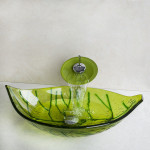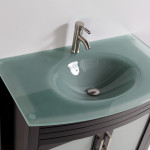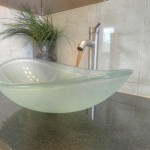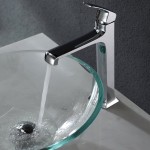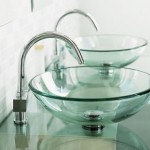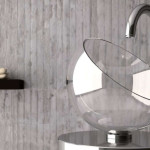Utility Properties Of a Glass Sink

Glass sinks are a relatively new tendency in the world of bathroom fixtures. Transparent glass washbowls are perceived as lightweight and airy, unlike the heavy ceramic alternatives. A bathroom interior featuring a glass sink appears elegant and stylish. Another undoubted advantage of such fixtures is their ability to blend splendidly into any designer’s project.

Utility Properties Of Glass Sinks
The alleged fragility of glass sinks is just a myth, as today manufacturers use shockproof tempered glass that does not shatter or crack even when subjected to a significant impact of mechanical nature. The walls of such a washbowl are at least 0.5″ thick. Glass sinks can withstand sharp temperature fluctuations, which occur when you switch the tap between hot and cold water.
Cleaning glass sinks is easy, because the material’s structure is monolithic, as opposed to ceramic surfaces with their micropores. Glass is resistant to most household chemicals, except for scouring powders, which may leave scratches.

Types Of Glass Bathroom Sinks
A glass washbowl on a pedestal can be shaped in various manners, from the classic hemisphere and rectangle to a hand-made flower with fanciful petals. This type is the most convenient, as it takes up little space and usually comes with a helpful glass shelf, where you can accommodate the necessary minor items, such as a piece of soap or the toothbrush holder.
A suspended (or floating) glass sink is the idea perfectly suitable for small and medium-sized bathrooms. It does not encumber the interior, helping to save a lot of space and boasting a truly airy appearance. A floating glass sink is highly appropriate in a glamorous bathroom interior, where it will create the ambiance of enchantment and loveliness.
A glass sink topping a vanity appears suitable in a spacious bathroom. The washbowl and the countertop are often merged into a single piece. You can hide away all the bathroom supplies in the vanity cabinet, keeping them within convenient reach.









